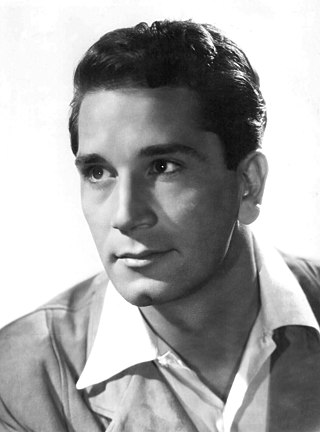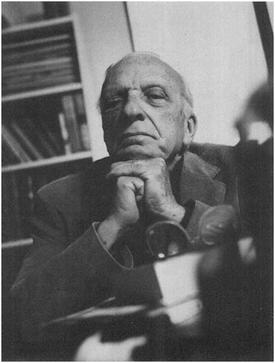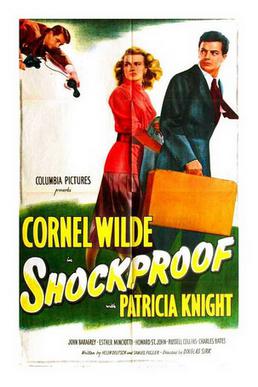
Cornel Wilde was a Hungarian-American actor and filmmaker.

Nicholas Peter Conte, known professionally as Richard Conte, was an American actor. He appeared in more than 100 films from 1939 through the 1970s, including I'll Cry Tomorrow, Ocean's 11, and The Godfather.

David Raksin was an American composer who was noted for his work in film and television. With more than 100 film scores and 300 television scores to his credit, he became known as the "Grandfather of Film Music.".

John Derek was an American actor, filmmaker and photographer. He appeared in such films as Knock on Any Door, All the King's Men, Rogues of Sherwood Forest (1950), and The Ten Commandments (1956). He was also known for launching the career of his fourth wife, Bo Derek.

Joseph H. Lewis was an American B-movie film director whose stylish flourishes came to be appreciated by auteur theory-espousing film critics in the years following his retirement in 1966. In a 30-year directorial career, he directed numerous low-budget westerns, action pictures, musicals, adventures, and thrillers. Today he is remembered for mysteries and film noir stories: My Name Is Julia Ross (1945) and So Dark the Night (1946) as well as his most highly regarded features, 1950's Gun Crazy, which spotlighted a desperate young couple who embark on a deadly crime spree, and the 1955 film noir The Big Combo, with its stunning cinematography by John Alton.

Jean Wallace was an American television and film actress.

Philip Yordan was an American screenwriter, film producer, novelist and playwright. He was a three-time Academy Award nominee, winning Best Story for Broken Lance (1951).

A Lady Without Passport is a 1950 American film noir film directed by Joseph H. Lewis and starring Hedy Lamarr and John Hodiak. Written by Howard Dimsdale, the film is about a beautiful concentration-camp refugee who has taken up residence in Cuba while awaiting permission to enter the United States. An undercover immigration agent decides to use her as an informant to entrap the leader of an alien-smuggling ring.

The Chase is a 1946 American film noir directed by Arthur Ripley. The screenplay by Philip Yordan is based on Cornell Woolrich's 1944 novel The Black Path of Fear. It stars Robert Cummings as Chuck Scott, a veteran who suffers from hallucinations. When he returns a lost wallet to violent mobster Eddie Roman, Eddie offers to hire him as a chauffeur. Chuck becomes mixed up in a plot to help Eddie's wife Lorna run off to Havana to escape her cruel husband.

House of Strangers is a 1949 American black-and-white drama film directed by Joseph L. Mankiewicz and starring Edward G. Robinson, Susan Hayward, and Richard Conte. The screenplay by Philip Yordan and Mankiewicz is the first of three film versions of Jerome Weidman's novel I'll Never Go There Any More, the others being the Spencer Tracy western Broken Lance (1954) and The Big Show (1961).

Shockproof is a 1949 American crime film noir directed by Douglas Sirk and starring Patricia Knight and Cornel Wilde. Wilde and Knight were husband and wife during filming. They divorced in 1951.

Big Jack is a 1949 American Western film starring Wallace Beery, Richard Conte and Marjorie Main. The movie was directed by Richard Thorpe, and the screenplay was written by Gene Fowler and Otto Eis from the novel by Robert Thoeren. The picture is a comedy-drama, set on the American frontier in the early 1800s, about outlaws who befriend a young doctor in legal trouble for acquiring corpses for anatomical research.
Jakob Gimpel was a Polish concert pianist and educator.

Woman's World is a 1954 American CinemaScope and print by Technicolor drama film about corporate America directed by Jean Negulesco and starring Clifton Webb, June Allyson, Van Heflin, Lauren Bacall, Fred MacMurray, Arlene Dahl and Cornel Wilde. The screenplay concerns three men who compete for the top job at a large company.

Star of India is a 1954 British-Italian swashbuckling adventure film directed by Arthur Lubin and starring Cornel Wilde, Jean Wallace, Herbert Lom, and Walter Rilla. It was shot at the Riverside Studios in London and on location in Aosta. The film's sets were designed by the art director Cedric Dawe. It was released in the United States in April 1956 by United Artists.

Joe MacBeth is a 1955 British–American crime drama, directed by Ken Hughes and starring Paul Douglas, Ruth Roman and Bonar Colleano. It is a modern retelling of Shakespeare's Macbeth, set in a 1930s American criminal underworld. The film's plot closely follows that of Shakespeare's original play. It has been called "the first really stand out movie" of Hughes' career.

Storm Fear is a 1955 American crime drama film noir directed by Cornel Wilde, starring himself, Jean Wallace and Dan Duryea. It was Wilde's feature directorial debut.

Passion is a 1954 American Western film directed by Allan Dwan and written by Howard Estabrook, Beatrice A. Dresher and Joseph Lejtes. The film stars Cornel Wilde, Yvonne De Carlo, Raymond Burr, Lon Chaney Jr., Rodolfo Acosta and John Qualen. The film was released on October 6, 1954, by RKO Pictures.

The Homestretch is a 1947 American drama film directed by H. Bruce Humberstone and written by Wanda Tuchock. The film stars Cornel Wilde, Maureen O'Hara, Glenn Langan, Helen Walker, James Gleason, Henry Stephenson and Margaret Bannerman. The film was released on May 4, 1947, by 20th Century Fox.
Slaves of Babylon is a 1953 American adventure film directed by William Castle and starring Richard Conte and Linda Christian





















